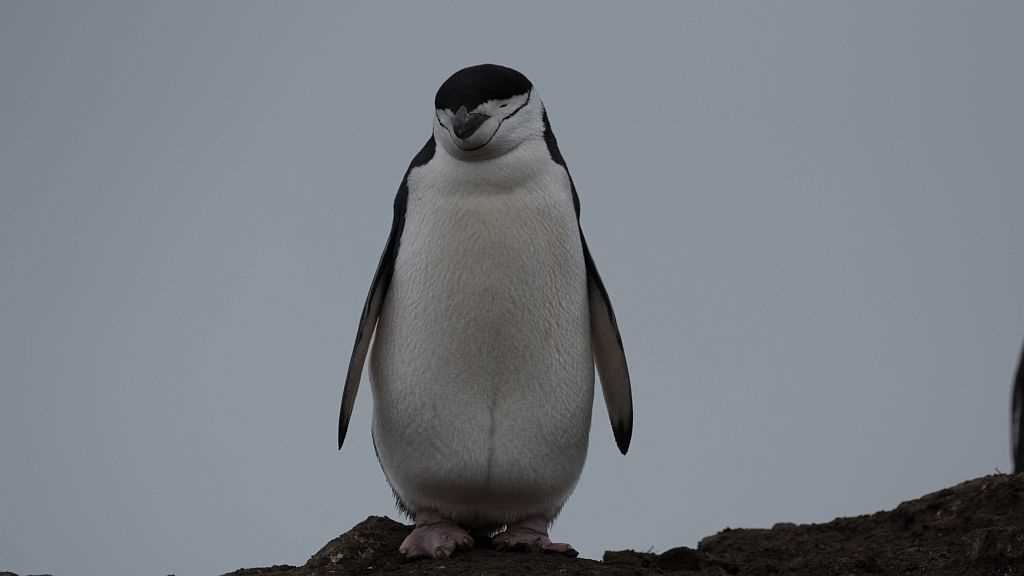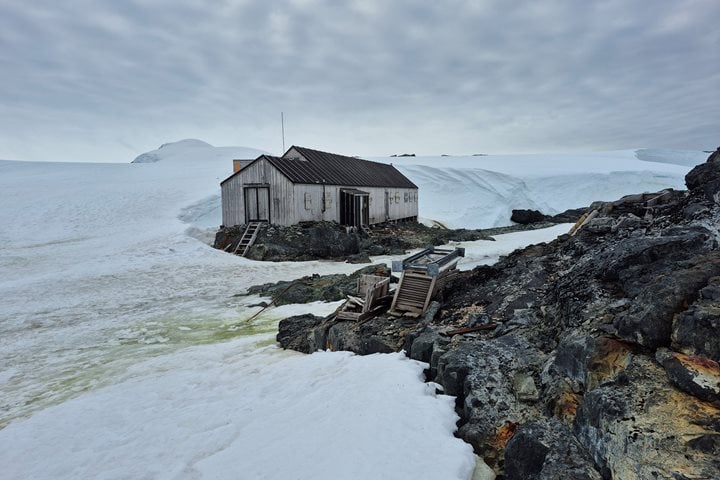Our first day in Antarctica! After mandatory briefings about safety and bio-security and an optional briefing about kayaking, we were ready to make our first landing after lunch.
We landed at a small, moss- and penguin-covered island called both Barrientos and Aitcho. The name Aitcho is a spelled-out version of H.O. or Hydrographic Office, the name given to it by the British during the Discovery Expeditions. The island is home to both chinstrap and gentoo penguins and this was a wonderful introduction to both species as we led guided walks past several colonies and even a juvenile elephant seal, which had decided to carry out its molting period smack-dab in the middle of a gentoo colony.
For many, the most exciting part of the day was when a very determined skua homed in on a gentoo penguin sitting on an egg and forcefully yanked its tail—a move that successfully pulled the bird off its nest and exposed its eggs. The gentoos were not to be foiled, though. Several penguins from the colony and beyond rushed to the aid of the dislodged individual and pecked forcefully at the darting skua. In the end, the penguin managed to regain its place on its eggs while the skua sat near us and observed closely.
After some subdued days on the Drake Passage, we celebrated our first day in Antarctica with an excited and upbeat crowd at the Captain’s Welcome Cocktail Party in the Lounge before heading to another great meal. But our day’s activity wasn’t over as we headed through the very narrow opening into the active caldera of Deception Island. This narrow passage is tricky to navigate in the best of conditions as there is a big undersea rock right in the middle of the channel. In the waves, wind and low cloud, our officers did an incredible job maneuvering the ship into Whaler’s Bay for views of this old shore-based whaling station that was later used by the British as a base of scientific operations. The Whaler’s Bay buildings were abandoned in 1969 during the last major volcanic eruption and the subsequent mud flows or lahars, and they now stand as historic monuments and testaments to the power of nature.







